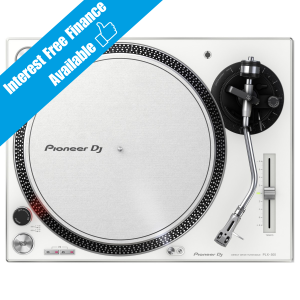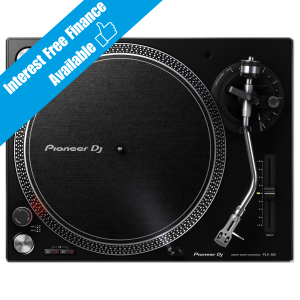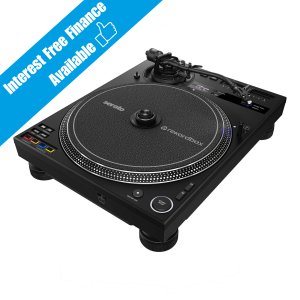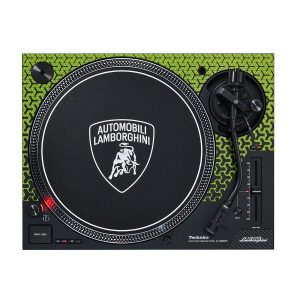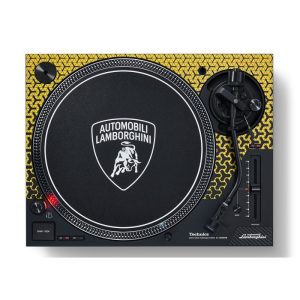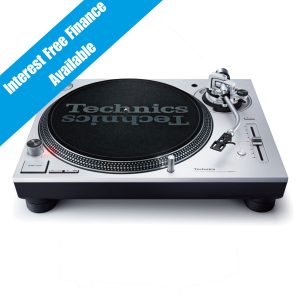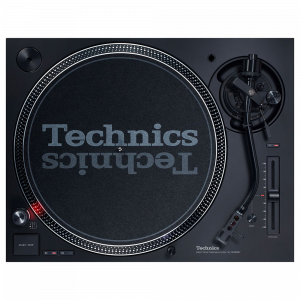Coined by DJ Babu of the Beat Junkies crew, the term ‘turntablism’ emerged in 1995 to reflect the artistic practices of the hip hop DJ and, specifically, to denote the difference between playing back records and using turntables to manipulate sound. What’s described as turntablism today however, extends beyond hip hop, and its history starts much earlier.
The innovators – from John Cage to DJ Kool Herc – who transformed your humble record player to what it is today
The history of turntablism is the evolution of the record player from a device for playing music into an instrument on which to make it. The journey was a slow one: It was more than a century after the invention of the phonograph in 1877 that its full capabilities were first truly explored. In the Bronx, New York, the likes of Grand Wizard Theodore and Grandmaster Flash cut up samples, scratched records, and invented a genre that still dominates pop culture today: Hip-Hop.
It was these pioneers — the godfathers of the scene — and those that followed, such as DJ Premier, Eric B and DJ Polo, that revolutionised both music and the record itself. Your turntables can not only play and mix music, but create it too, and it was these visionaries that paved the way.
Early influencers
They weren’t, in fact, the first – but their imagination and invention are unparalleled. Further back, others were pushing the limits of the record player long before them, such as the composer John Cage, whose music concrète was early, avant-garde experimentation. His Imaginary Landscape No. 1, recorded in 1939, for example, is composed for two variable speed turntables. It couldn’t be further from hip-hop — and the music you probably mix on your decks — but it’s an intriguing, pioneering piece of work.
Sampling
In the 1960s and 1970s, from Kingston to the Lower East Side to Chicago, DJs began to experiment with mixing and sampling in genres as diverse as disco, reggae and early house. But the turntable didn’t truly become an instrument until DJ Kool Herc, the man to whom hip-hop perhaps owes the most, invented the breakbeat through spinning funk records.
By creating short loops of the isolated percussive elements of existing songs, he created new ones; songs that could be danced to — talked and, soon, rapped over. It’s true that by the end of the 1980s, MCs — such as Rakim, Kool G Rap and Chuck D — became the stars, but when naming the true forefathers of hip-hop, it is the DJs of the 1970s that should be celebrated.
They were the architects of the genre, the creators of its sound. One of the true pioneers was Grand Wizard Theodore, the inventor of the scratch, and another Bronx resident. Or perhaps his mother should be given full credit. Reaching to silence a record he was playing in his bedroom after she called up to him, Theodore slipped and inadvertently scratched the vinyl, creating a unique sound.
After honing the technique, he was encouraged by his mentor, Grandmaster Flash, to showcase it to the neighbourhood. These block parties became legendary as hip-hop developed into party music. The sound was exported to the world in the form of The Sugarhill Gang’s classic Rapper’s Delight, and even the likes of Blondie, whose Rapture album namechecked Fab Five Freddy and Grandmaster Flash, got on board.
Widespread acclaim
However, it wasn’t until 1984 that the scratch — still a challenging, harsh sound — was put on the world stage. Grand Mixer D.ST — from the Bronx, of course — DJ’d Herbie Hancock’s jazz-fusion hit Rockit live at the Grammys, performing a scratch solo. The writer Mark Katz described it as “the scratch heard around the world” — a watershed moment in hip-hop and the turntable’s history. And a song that is, no doubt, still a staple of your sets today.
Scratching since then has had its ups and downs. In the early 1990’s, it was ubiquitous — often performed by DJ Premier with his group Gang Starr and guest produced on Nas, Biggie and Jay Z records. The DMC World DJ Championships began — pitting turntablists against each other in battles — with the likes of the ridiculously talented DJ Qbert taking the practice from art to science. Sadly, this is where scratching, for the most part, has remained.
DJ TLM TV show a few examples of turntables and it’s possibilities.

